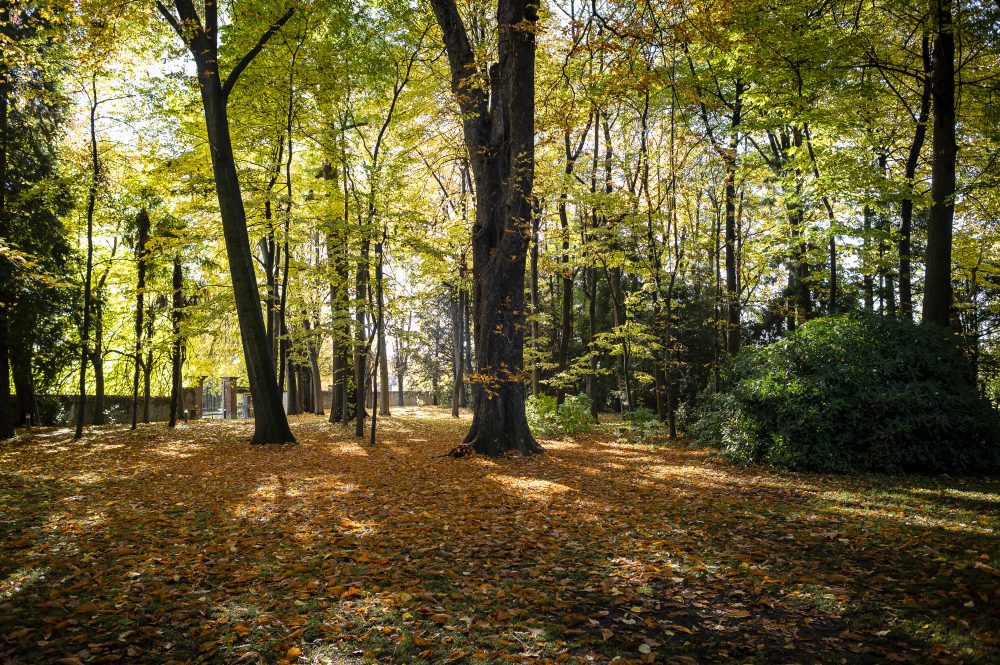The Clearing
In Italy, from the Renaissance until the end of the 17th century, architects extended their vision of rational and geometric spaces to nature. The so-called "Italian gardens" were orderly chessboards designed according to the same perspectives as buildings. Evergreen myrtle or boxwood hedges, reduced to pure volumes, retained only a faint memory of the tree or bush from which they descended; elevation changes became terraces connected by staircases; the fountains, situated at the crossroads of perspective lines, mitigate the rigidity of the composition with sculptures and water displays; the walls separate the garden from the encompassing landscape.
In the early decades of the 18th century, in England, this geometric formalism, which was characterized by the idea of man's dominance over Nature, was questioned in favour of a new landscaping style. For the first time, the emotional relationship between humans and nature gave rise to a new kind of garden, one "more an expression of feeling than painting," as Beethoven wrote in his Pastoral Symphony. This revolution in garden art involved not only gardeners but also architects, philosophers, and poets who narrated the beauty of a nature where the hand of man is present yet invisible.
Thus, the English garden, or romantic park, was born.
In the 1820s Miradolo Castle park embraced this aesthetic under the influence of "Babet," Maria Elisabetta Ferrero della Marmora, the wife of Marquis Maurizio Massel. She was a woman with a big personality and botanical passion. During Babet's time, and with Xavier Kurten's intervention, the 18th-century garden design, which included a fishpond, a garden of delights, and an orchard in this area, was radically transformed. The fishpond became a small lake, and the Park expanded, developing around the large central meadow opposite the main building.
Even today, Babet's garden revolution is a bold invitation to view the changes we witness not as mere observers but as participants.

In Italy, from the Renaissance until the end of the 17th century, architects extended their vision of rational and geometric spaces to nature. The so-called “Italian gardens” were orderly chessboards designed according to the same perspectives as buildings. Evergreen myrtle or boxwood hedges, reduced to pure volumes, retained only a faint memory of the tree or bush from which they descended; elevation changes became terraces connected by staircases; the fountains, situated at the crossroads of perspective lines, mitigate the rigidity of the composition with sculptures and water displays; the walls separate the garden from the encompassing landscape.
In the early decades of the 18th century, in England, this geometric formalism, which was characterized by the idea of man’s dominance over Nature, was questioned in favour of a new landscaping style. For the first time, the emotional relationship between humans and nature gave rise to a new kind of garden, one “more an expression of feeling than painting,” as Beethoven wrote in his Pastoral Symphony. This revolution in garden art involved not only gardeners but also architects, philosophers, and poets who narrated the beauty of a nature where the hand of man is present yet invisible.
Thus, the English garden, or romantic park, was born.
In the 1820s Miradolo Castle park embraced this aesthetic under the influence of “Babet,” Maria Elisabetta Ferrero della Marmora, the wife of Marquis Maurizio Massel. She was a woman with a big personality and botanical passion. During Babet’s time, and with Xavier Kurten’s intervention, the 18th-century garden design, which included a fishpond, a garden of delights, and an orchard in this area, was radically transformed. The fishpond became a small lake, and the Park expanded, developing around the large central meadow opposite the main building.
Even today, Babet’s garden revolution is a bold invitation to view the changes we witness not as mere observers but as participants.
